Most famous landmarks in US
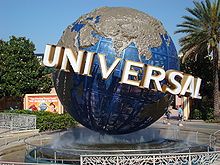 |
| Tourist Attractions in the US |
If you're curious to know about USA's top destinations and natural landmarks, you can read our top 10 natural wonders andtop 25 places in the US articles.
The following list of most famous landmarks in US isn’t a definitive list so, if you feel other landmarks should be worthy of inclusion on the list below, please do email us with your your suggestions!
Hollywood Sign
The Hollywood Sign isn’t just one of the most famous landmarks in US, but also one of the most recognizable and iconic signs in the world! The Hollywood Sign is truly one of the top attractions in California with a great story behind it.
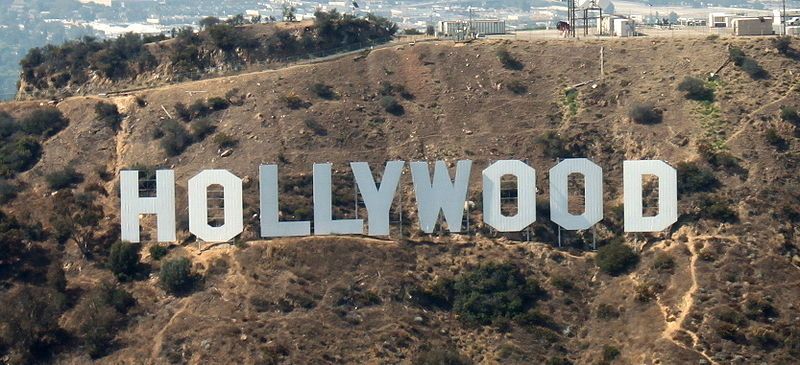
For those of you that don’t know, the Hollywood Sign once read Hollywoodland in early 1920’s when it was first erected as an advertisement slogan, though around the early 1950’s the City of Los Angeles acquired the sign and dropped off the ‘land’ part.
Las Vegas Welcome Sign
Just like the Hollywood Sign Las Vegas Welcome Sign is iconic landmark that is recognized around the world. The actual sign reads: “Welcome to Fabulous Las Vegas Nevada”
 |
| Top 10 Places to Visit in the US |
Space Needle Tower
The Space Needle Tower is another of the most famous landmarks in US and one of the most recognizable symbols in Washington State.
The Space Needle was built also in early 1960’s in Seattle and stands today at around 600 ft tall.
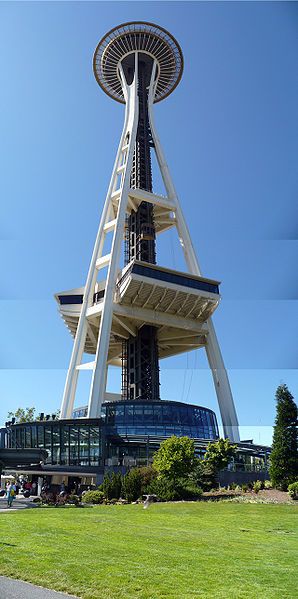
There are other great observation towers in the US such as theTower of Americas in San Antonio Texas. However, what makes the Space Needle such aworld renowned landmark is its unique spaceship-like design and its amazing panoramic views.
Cape Canaveral Launch Pad/ Space Center
Cape Canaveral RocketLaunch Site
is another of the most recognizable landmarks in America, as it’s the site where NASA launches rockets and shuttles into space.
The Cape Canaveral Launch
Pad is located along the East Coast of Florida at the Cape Canaveral Air Force Station, which is located east of Kissimmee.
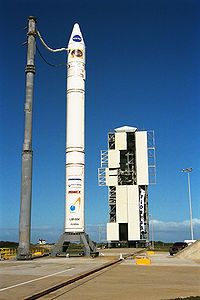
Besides the checking out the launch site, there is also the JF Kennedy Space Center, which is just an amazing attraction you can’t miss visiting when in Cape Canaveral.
Golden Gate Bridge
The Golden Gate Bridge is another landmark that is instantly recognizable at home and abroad, which isn’t surprising since the Golden Gate Bridge is simply breathtaking sight, especially at night!
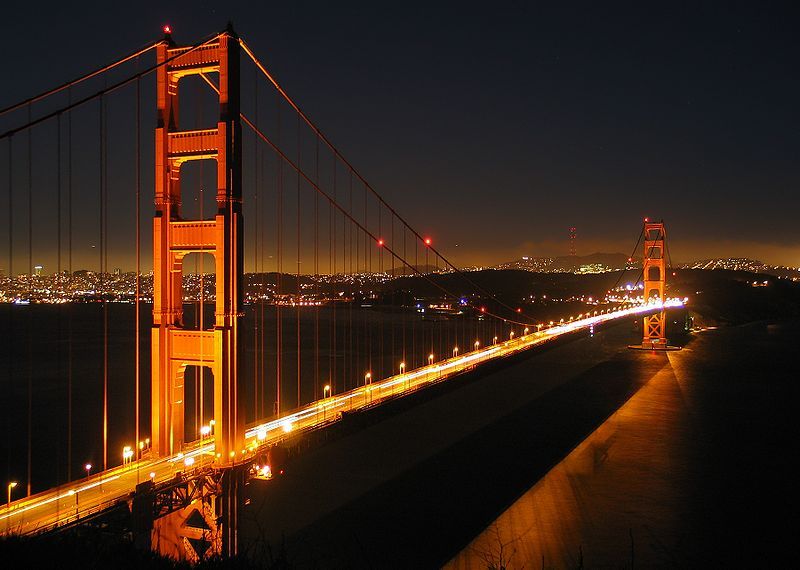
It’s not surprise then that the Golden Gate Bridge in sanfrancisco would rank on our list as one of the most famous landmarks in US as it offers incredible views of the sea and the infamous Alcatraz prison.
Mount Rushmore National Memorial
The Mount Rushmore Memorial located in Keystone South Dakota is one of the most famous and talked about national monuments in the US.

Mt Rushmore monument is a memorial to honor former Presidents of the USA (George Washington, Abraham Lincoln, Theodore Roosevelt and Thomas Jefferson).
Lincoln Memorial
The Lincoln Memorial in Washington DC is bar the White House one of the most recognizable landmarks in the US hand down!
The memorial was built around 1920’s and it stands today as one of the most awe inspiring sights, and most popularly remembered as the sight where Dr. Martin Luther King gave its famous “I have a dream” speech.
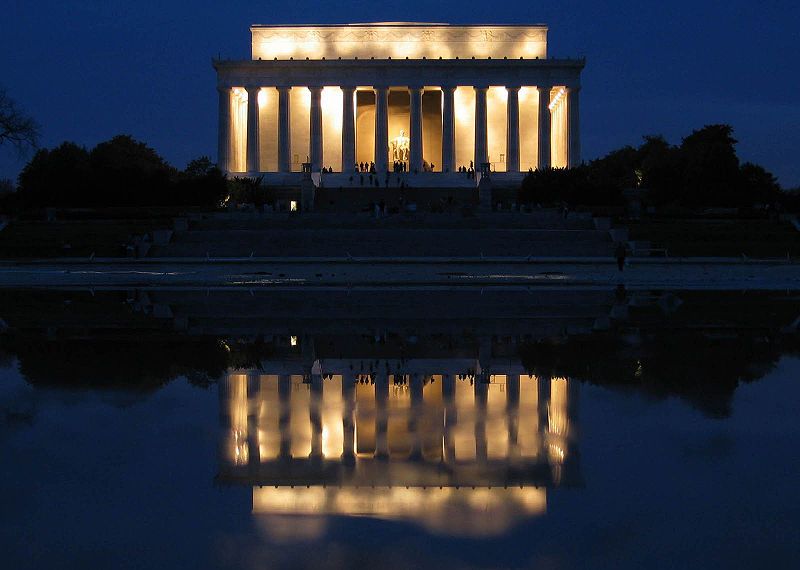
A visit to the Lincoln Memorial is truly an amazing experience, especially at night when the memorial is beautifully lit up.
Empire State Building
Famous landmarks in the United States don’t come as iconic as the Empire State Building in Manhattan Island, which has been forever immortalized as a pop culture icon in movies such as “King Kong” and "Independence Day".

The Empire State Building is one of the most recognizable buildings in the New York City Skyline and a top attraction as well, as it boasts a great observation deck where you can get impressive views of the City!
Statue of Liberty
The Statue of Liberty is one of the most famous landmarks in US and recognized across the world as a symbol of freedom.
The Statue of Liberty structure was actually a gift from France to the United States in recognition of the friendship between the two countries.
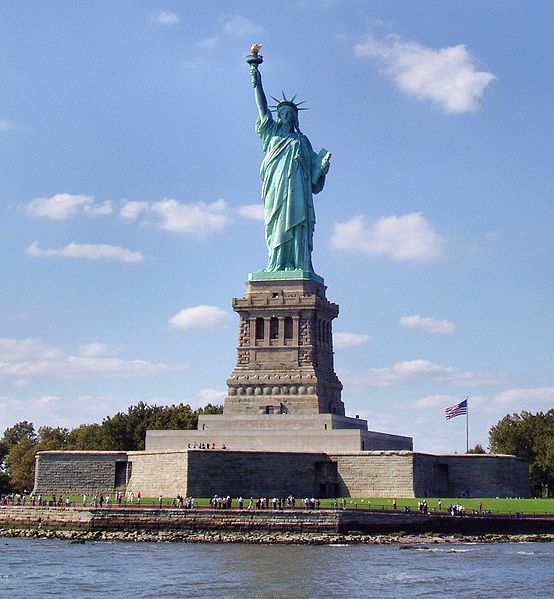
The Statue of Liberty is located in Liberty Island in New York City, and it’s another popular icon instantly recognizable both in the US and internationally.
http://www.mytravelguideposts.com/
12 Amazing Ancient Cities
Aleppo, Syria
Aleppo is one of the oldest continuously inhabited cities in the world; it has been inhabited since perhaps as early as the 6th millenium BC. Excavations at Tell Qaramel (25 km north of Aleppo) show the area to have been inhabited since the 11th millenium BC, which makes it the oldest known human settlement in the world. Excavations at Tell as-Sawda and Tell al-Ansari, just south of the old city of Aleppo, show that the area was occupied since at least the latter part of the 3rd millennium BC; and this is also when Aleppo is first mentioned in cuneiform tablets unearthed in Ebla and Mesopotamia, in which it is noted for its commercial and military proficiency. Such a long history is probably due to its being a strategic trading point midway between the Mediterranean Sea and Mesopotamia.
View of Aleppo from the Citadel
Mount Athos, Greece
Mount Athos is a mountain on the eponymous peninsula Macedonia, Greece. The peninsula is called the “Holy Mountain” (Greek: Άγιον Όρος, Agion Oros/Hagion Oros). In Classical times, the peninsula was called Akté(Ακτή) (sometimes Acte or Akte). Its political status in Greece is known as the Autonomous Monastic State of the Holy Mountain. This World Heritage Site is home to 20 Eastern Orthodox monasteries and forms a self-governed monastic state within the sovereignty of the Hellenic Republic. Spiritually, Mount Athos comes under the direct jurisdiction of the Ecumenical Patriarchate of Constantinople.
Though land-linked, Mount Athos is accessible only by boat. The daily number of visitors entering Mount Athos is restricted and all are required to obtain a special entrance permit valid for a limited period. Only males are allowed entrance into Mount Athos, which is called “Garden of the Virgin” by monks,[ and Orthodox Christians take precedence in the permit issuance procedure. Only males over the age of 18 who are members of the Eastern Orthodox Church are allowed to live on Athos, either as monks or as workers. There is a small number of unarmed religious guards (Σερδάρηδες, Serdarides), who are not monks, to keep order. Police and Coast Guard presence is very discreet. Residents not part of the religious communities are required to live in the peninsula's capital, Karyes. Most workers live at the place where they work. Small low class hotels exist at Karyes (administrative center) and Dafni (main port). The 2001 Greek national census counted a population of 2,262 inhabitants.
Pomepeii, Italy
The city of Pompeii is a partially buried Roman town-city near modern Naples in the Italian region of Campania, in the territory of the comune of Pompei. The name “Pompeii” in Latin is a second declension plural (Pompeii, -orum). According to Theodor Kraus, “The root of the word Pompeii would appear to be the Oscan word for the number five, pompe, which suggests that either the community consisted of five hamlets or, perhaps, it was settled by a family group (gens Pompeia).” Along with Herculaneum, its sister city, Pompeii was destroyed and completely buried during a long catastrophic eruption of the volcano Mount Vesuvius spanning two days in 79 AD. The eruption buried Pompeii under 4 to 6 meters of ash and pumice, and it was lost for over 1,500 years before its accidental rediscovery in 1599. Since then, its excavation has provided an extraordinarily detailed insight into the life of a city at the height of the Roman Empire. Today, this UNESCO World Heritage Site is one of the most popular tourist attractions of Italy, with approximately 2,500,000 visitors every year.
Asyut, Egypt
A view of modern-day Asyut from the ancient tombs.
Around 3100 BC ancient Asyut was the capital of the Thirteenth Nome of Upper Egypt (Lycopolites Nome), seated on the western bank of the Nile. The two most prominent gods of pre-Christian Asyut were Anubis and Wepwawet, both funerary deities. During the First Intermediate Period, the rulers of "Zawty"; Khety I, Itefibi, and Khety II were supporters of the Herakleopolitan kings, of whose domain the Nome formed the southern limits. The conflict between this Nome and the southern Nomes under the rule of the Eleventh dynasty ended with the victory of Thebes and the decline of Asyut's importance.
In Graeco-Roman times, there was a distinct dialect of Coptic spoken in Asyut, known as "Lycopolitan", after the Greek name for the city. Lesser-used names for this dialect are "Sub-Akhmimic" and "Assiutic". Today, the city of Asyut has almost 400,000 inhabitants. It is the Egyptian city with the highest Coptic Christian concentration. It is also home to the University of Asyut, one of the largest universities in Egypt, Assiut Barrage, and to the Lillian Trasher Orphanage. The Virgin Mary is reported to have appeared in Asyut on 17 August 2000. This apparition is recognized as official by the Coptic Orthodox Church.
 The tombs
The tombs
 Sidon, Lebanon
Sidon, Lebanon
Sidon has been inhabited since 4000 BC and perhaps as early as Neolithic times (6000 - 4000 BC). It was one of the most important Phoenician cities, and may have been the oldest. From here, and other ports, a great Mediterranean commercial empire was founded. Homer praised the skill of its craftsmen in producing glass, purple dyes, and its women's skill at the art of embroidery. It was also from here that a colonizing party went to found the city of Tyre. Tyre also grew into a great city, and in subsequent years there was competition between the two, each claiming to be the metropolis ('Mother City') of Phoenicia. Glass manufacturing, Sidon's most important enterprise in the Phoenician era, was conducted on a vast scale, and the production of purple dye was almost as important. The small shell of the Murex trunculus was broken in order to extract the pigment that was so rare it became the mark of royalty.
Aquincum, Hungary
The ancient city of Aquincum was situated on the North-Eastern borders of the Pannonia province within the Roman Empire. The ruins of the city can be found today in Budapest, the capital city of Hungary. It is believed that Marcus Aurelius may have written at least part of his book Meditations at Aquincum. Originally settled by the Eravisci, a Celtic tribe, and named Ak-ink (“Abundant Water”) because of the nearby thermal springs, Aquincum served as a military base (castrum), having been part of the Roman border protection system called "limes". Around AD 41-54, a 500-strong cavalry unit arrived, and a Roman legion of 6000 men was stationed here by AD 89. The city gradually grew around the fortress, and after Pannonia was reorganised by the Romans in AD 106, Aquincum became the capital city of Pannonia Inferior. The city had around 30,000 to 40,000 inhabitants by the end of the 2nd century, and covered a significant part of the area today known as the Óbuda district within Budapest. Ruins from the old Roman settlement can be seen in other parts of Budapest as well, notably Contra-Aquincum and the Amphitheater. People living in the settlement could enjoy the achievements of the Empire, like central heating in the houses, public baths, a Mithraeum and palaces, as well as amphitheatres for gladiatorial combats and beast fights.
Merv, Turkmenistan
Merv was a major oasis-city in Central Asia, on the historical Silk Road, located near today's Mary in Turkmenistan. Several cities have existed on this site, which is significant for the interchange of culture and politics at a site of major strategic value. It is claimed that Merv was briefly the largest city in the world in the 12th century.The site of ancient Merv has been listed by UNESCO as a World Heritage Site.
Al-Mad'in, Iraq
Al-Mada'in, meaning "The cities", is the name given to an ancient metropolis formed by Ctesiphon and Seleucia (also referred to as Seleucia-Ctesiphonon) on opposite sides of the Tigris River in present-day Iraq. It was one of the cites of an early Babylonian Talmudic yeshiva, founded by Rava, as well as the original seat of the Exilarch. During the beginning of sixth century Mar-Zutra II formed a politically independent state where he ruled from Mahuza for about 7 years.The site has received considerable interest from Archeologists since the eighteenth century; the most famous landmark there is the Taq-i Kisra.
Alexandria, Egypt
Alexandria with a population of 4.1 million, is the second-largest city in Egypt, and is the country's largest seaport, serving approximately 80% of Egypt's imports and exports. Alexandria is also an important tourist resort. Alexandria extends about 32 km (20 mi) along the coast of the Mediterranean Sea in north-central Egypt. It is home to the Bibliotheca Alexandrina (the new Library of Alexandria). It is an important industrial center because of its natural gas and oil pipelines from Suez.
In ancient times, Alexandria was one of the most famous cities in the world. It was founded around a small pharaonic town c. 331 BC by Alexander the Great. It remained Egypt's capital for nearly a thousand years, until the Muslim conquest of Egypt in AD 641, when a new capital was founded at Fustat (Fustat was later absorbed into Cairo). Alexandria was known because of its Lighthouse of Alexandria (Pharos), one of the Seven Wonders of the Ancient World; its library (the largest library in the ancient world); and the Catacombs of Kom el Shoqafa, one of the Seven Wonders of the Middle Ages. Ongoing maritime archaeology in the harbor of Alexandria, which began in 1994, is revealing details of Alexandria both before the arrival of Alexander, when a city named Rhacotis existed there, and during the Ptolemaic dynasty.
From the late 19th century, Alexandria became a major center of the international shipping industry and one of the most important trading centers in the world, both because it profited from the easy overland connection between the Mediterranean Sea and the Red Sea, and the lucrative trade in Egyptian cotton.
Delphi, Greece
Delphi is both an archaeological site and a modern town in Greece on the south-western spur of Mount Parnassus in the valley of Phocis.
In Greek mythology, Delphi was the site of the Delphic oracle, the most important oracle in the classical Greek world, and a major site for the worship of the god Apollo after he slew the Python, a deity who lived there and protected the navel of the Earth. Python (derived from the verb pythein, "to rot") is claimed by some to be the original name of the site in recognition of the Python that Apollo defeated (Miller, 95). The Homeric Hymn to Delphic Apollo recalled that the ancient name of this site had been Krisa.
Apollo's sacred precinct in Delphi was a panhellenic sanctuary, where every four years, starting in 586 B.C. (Miller, 96) athletes from all over the Greek world competed in the Pythian Games, one of the four panhellenic (or stephanitic) games, precursors of the Modern Olympics. The victors at Delphi were presented with a laurel crown which was ceremonially cut from a tree in Tempe by a boy who re-enacted the slaying of the Python (Miller, 96). Delphi was set apart from the other games sites because it hosted the mousikos agon, musical competitions (Miller, 95). These Pythian Games rank second among the four stephanitic games chronologically and based on importance (Miller, 96). These games, though, were different from the games at Olympia in that they were not of such vast Importance to the city of Delphi as the games at Olympia were to the city of Olympia. Delphi would have been a renowned city whether or not it hosted these games; it had other attractions that led to it being labeled the "omphalos" (navel) of the earth, in other words, the center of the world (Miller, 96–7).
Chitrakuta, India
Chitrakuta (is a town and a nagar panchayat in Satna district in the state of Madhya Pradesh, India. It is a town of religious, cultural, historical and archaeological importance, situated in the Bundelkhand region, bordering Chitrakoot district in Uttar Pradesh, India. Chitrakoot Dham (Karwi) is a nearby town. It is known for a number of temples and sites mentioned in Hindu scriptures.
Machu Picchu, Peru
Machu Picchu – "Old Mountain", pronounced [ˈmɑtʃu ˈpixtʃu]) – is a pre-Columbian 15th-century Inca site located 2,430 metres (7,970 ft) above sea level. It is situated on a mountain ridge above the Urubamba Valley in Peru, which is 80 kilometres (50 mi) northwest of Cusco and through which the Urubamba River flows. Most archaeologists believe that Machu Picchu was built as an estate for the Inca emperor Pachacuti (1438–1472). Often referred to as “The Lost City of the Incas”, it is perhaps the most familiar icon of the Inca World.
Aleppo is one of the oldest continuously inhabited cities in the world; it has been inhabited since perhaps as early as the 6th millenium BC. Excavations at Tell Qaramel (25 km north of Aleppo) show the area to have been inhabited since the 11th millenium BC, which makes it the oldest known human settlement in the world. Excavations at Tell as-Sawda and Tell al-Ansari, just south of the old city of Aleppo, show that the area was occupied since at least the latter part of the 3rd millennium BC; and this is also when Aleppo is first mentioned in cuneiform tablets unearthed in Ebla and Mesopotamia, in which it is noted for its commercial and military proficiency. Such a long history is probably due to its being a strategic trading point midway between the Mediterranean Sea and Mesopotamia.
View of Aleppo from the Citadel
Mount Athos, Greece
Mount Athos is a mountain on the eponymous peninsula Macedonia, Greece. The peninsula is called the “Holy Mountain” (Greek: Άγιον Όρος, Agion Oros/Hagion Oros). In Classical times, the peninsula was called Akté(Ακτή) (sometimes Acte or Akte). Its political status in Greece is known as the Autonomous Monastic State of the Holy Mountain. This World Heritage Site is home to 20 Eastern Orthodox monasteries and forms a self-governed monastic state within the sovereignty of the Hellenic Republic. Spiritually, Mount Athos comes under the direct jurisdiction of the Ecumenical Patriarchate of Constantinople.
Though land-linked, Mount Athos is accessible only by boat. The daily number of visitors entering Mount Athos is restricted and all are required to obtain a special entrance permit valid for a limited period. Only males are allowed entrance into Mount Athos, which is called “Garden of the Virgin” by monks,[ and Orthodox Christians take precedence in the permit issuance procedure. Only males over the age of 18 who are members of the Eastern Orthodox Church are allowed to live on Athos, either as monks or as workers. There is a small number of unarmed religious guards (Σερδάρηδες, Serdarides), who are not monks, to keep order. Police and Coast Guard presence is very discreet. Residents not part of the religious communities are required to live in the peninsula's capital, Karyes. Most workers live at the place where they work. Small low class hotels exist at Karyes (administrative center) and Dafni (main port). The 2001 Greek national census counted a population of 2,262 inhabitants.
Pomepeii, Italy
The city of Pompeii is a partially buried Roman town-city near modern Naples in the Italian region of Campania, in the territory of the comune of Pompei. The name “Pompeii” in Latin is a second declension plural (Pompeii, -orum). According to Theodor Kraus, “The root of the word Pompeii would appear to be the Oscan word for the number five, pompe, which suggests that either the community consisted of five hamlets or, perhaps, it was settled by a family group (gens Pompeia).” Along with Herculaneum, its sister city, Pompeii was destroyed and completely buried during a long catastrophic eruption of the volcano Mount Vesuvius spanning two days in 79 AD. The eruption buried Pompeii under 4 to 6 meters of ash and pumice, and it was lost for over 1,500 years before its accidental rediscovery in 1599. Since then, its excavation has provided an extraordinarily detailed insight into the life of a city at the height of the Roman Empire. Today, this UNESCO World Heritage Site is one of the most popular tourist attractions of Italy, with approximately 2,500,000 visitors every year.
Asyut, Egypt
A view of modern-day Asyut from the ancient tombs.
Around 3100 BC ancient Asyut was the capital of the Thirteenth Nome of Upper Egypt (Lycopolites Nome), seated on the western bank of the Nile. The two most prominent gods of pre-Christian Asyut were Anubis and Wepwawet, both funerary deities. During the First Intermediate Period, the rulers of "Zawty"; Khety I, Itefibi, and Khety II were supporters of the Herakleopolitan kings, of whose domain the Nome formed the southern limits. The conflict between this Nome and the southern Nomes under the rule of the Eleventh dynasty ended with the victory of Thebes and the decline of Asyut's importance.
In Graeco-Roman times, there was a distinct dialect of Coptic spoken in Asyut, known as "Lycopolitan", after the Greek name for the city. Lesser-used names for this dialect are "Sub-Akhmimic" and "Assiutic". Today, the city of Asyut has almost 400,000 inhabitants. It is the Egyptian city with the highest Coptic Christian concentration. It is also home to the University of Asyut, one of the largest universities in Egypt, Assiut Barrage, and to the Lillian Trasher Orphanage. The Virgin Mary is reported to have appeared in Asyut on 17 August 2000. This apparition is recognized as official by the Coptic Orthodox Church.


Sidon has been inhabited since 4000 BC and perhaps as early as Neolithic times (6000 - 4000 BC). It was one of the most important Phoenician cities, and may have been the oldest. From here, and other ports, a great Mediterranean commercial empire was founded. Homer praised the skill of its craftsmen in producing glass, purple dyes, and its women's skill at the art of embroidery. It was also from here that a colonizing party went to found the city of Tyre. Tyre also grew into a great city, and in subsequent years there was competition between the two, each claiming to be the metropolis ('Mother City') of Phoenicia. Glass manufacturing, Sidon's most important enterprise in the Phoenician era, was conducted on a vast scale, and the production of purple dye was almost as important. The small shell of the Murex trunculus was broken in order to extract the pigment that was so rare it became the mark of royalty.
Aquincum, Hungary
The ancient city of Aquincum was situated on the North-Eastern borders of the Pannonia province within the Roman Empire. The ruins of the city can be found today in Budapest, the capital city of Hungary. It is believed that Marcus Aurelius may have written at least part of his book Meditations at Aquincum. Originally settled by the Eravisci, a Celtic tribe, and named Ak-ink (“Abundant Water”) because of the nearby thermal springs, Aquincum served as a military base (castrum), having been part of the Roman border protection system called "limes". Around AD 41-54, a 500-strong cavalry unit arrived, and a Roman legion of 6000 men was stationed here by AD 89. The city gradually grew around the fortress, and after Pannonia was reorganised by the Romans in AD 106, Aquincum became the capital city of Pannonia Inferior. The city had around 30,000 to 40,000 inhabitants by the end of the 2nd century, and covered a significant part of the area today known as the Óbuda district within Budapest. Ruins from the old Roman settlement can be seen in other parts of Budapest as well, notably Contra-Aquincum and the Amphitheater. People living in the settlement could enjoy the achievements of the Empire, like central heating in the houses, public baths, a Mithraeum and palaces, as well as amphitheatres for gladiatorial combats and beast fights.
Merv, Turkmenistan
Merv was a major oasis-city in Central Asia, on the historical Silk Road, located near today's Mary in Turkmenistan. Several cities have existed on this site, which is significant for the interchange of culture and politics at a site of major strategic value. It is claimed that Merv was briefly the largest city in the world in the 12th century.The site of ancient Merv has been listed by UNESCO as a World Heritage Site.
Al-Mad'in, Iraq
Al-Mada'in, meaning "The cities", is the name given to an ancient metropolis formed by Ctesiphon and Seleucia (also referred to as Seleucia-Ctesiphonon) on opposite sides of the Tigris River in present-day Iraq. It was one of the cites of an early Babylonian Talmudic yeshiva, founded by Rava, as well as the original seat of the Exilarch. During the beginning of sixth century Mar-Zutra II formed a politically independent state where he ruled from Mahuza for about 7 years.The site has received considerable interest from Archeologists since the eighteenth century; the most famous landmark there is the Taq-i Kisra.
Alexandria, Egypt
Alexandria with a population of 4.1 million, is the second-largest city in Egypt, and is the country's largest seaport, serving approximately 80% of Egypt's imports and exports. Alexandria is also an important tourist resort. Alexandria extends about 32 km (20 mi) along the coast of the Mediterranean Sea in north-central Egypt. It is home to the Bibliotheca Alexandrina (the new Library of Alexandria). It is an important industrial center because of its natural gas and oil pipelines from Suez.
In ancient times, Alexandria was one of the most famous cities in the world. It was founded around a small pharaonic town c. 331 BC by Alexander the Great. It remained Egypt's capital for nearly a thousand years, until the Muslim conquest of Egypt in AD 641, when a new capital was founded at Fustat (Fustat was later absorbed into Cairo). Alexandria was known because of its Lighthouse of Alexandria (Pharos), one of the Seven Wonders of the Ancient World; its library (the largest library in the ancient world); and the Catacombs of Kom el Shoqafa, one of the Seven Wonders of the Middle Ages. Ongoing maritime archaeology in the harbor of Alexandria, which began in 1994, is revealing details of Alexandria both before the arrival of Alexander, when a city named Rhacotis existed there, and during the Ptolemaic dynasty.
From the late 19th century, Alexandria became a major center of the international shipping industry and one of the most important trading centers in the world, both because it profited from the easy overland connection between the Mediterranean Sea and the Red Sea, and the lucrative trade in Egyptian cotton.
Delphi, Greece
Delphi is both an archaeological site and a modern town in Greece on the south-western spur of Mount Parnassus in the valley of Phocis.
In Greek mythology, Delphi was the site of the Delphic oracle, the most important oracle in the classical Greek world, and a major site for the worship of the god Apollo after he slew the Python, a deity who lived there and protected the navel of the Earth. Python (derived from the verb pythein, "to rot") is claimed by some to be the original name of the site in recognition of the Python that Apollo defeated (Miller, 95). The Homeric Hymn to Delphic Apollo recalled that the ancient name of this site had been Krisa.
Apollo's sacred precinct in Delphi was a panhellenic sanctuary, where every four years, starting in 586 B.C. (Miller, 96) athletes from all over the Greek world competed in the Pythian Games, one of the four panhellenic (or stephanitic) games, precursors of the Modern Olympics. The victors at Delphi were presented with a laurel crown which was ceremonially cut from a tree in Tempe by a boy who re-enacted the slaying of the Python (Miller, 96). Delphi was set apart from the other games sites because it hosted the mousikos agon, musical competitions (Miller, 95). These Pythian Games rank second among the four stephanitic games chronologically and based on importance (Miller, 96). These games, though, were different from the games at Olympia in that they were not of such vast Importance to the city of Delphi as the games at Olympia were to the city of Olympia. Delphi would have been a renowned city whether or not it hosted these games; it had other attractions that led to it being labeled the "omphalos" (navel) of the earth, in other words, the center of the world (Miller, 96–7).
Chitrakuta, India
Chitrakuta (is a town and a nagar panchayat in Satna district in the state of Madhya Pradesh, India. It is a town of religious, cultural, historical and archaeological importance, situated in the Bundelkhand region, bordering Chitrakoot district in Uttar Pradesh, India. Chitrakoot Dham (Karwi) is a nearby town. It is known for a number of temples and sites mentioned in Hindu scriptures.
Machu Picchu, Peru
Machu Picchu – "Old Mountain", pronounced [ˈmɑtʃu ˈpixtʃu]) – is a pre-Columbian 15th-century Inca site located 2,430 metres (7,970 ft) above sea level. It is situated on a mountain ridge above the Urubamba Valley in Peru, which is 80 kilometres (50 mi) northwest of Cusco and through which the Urubamba River flows. Most archaeologists believe that Machu Picchu was built as an estate for the Inca emperor Pachacuti (1438–1472). Often referred to as “The Lost City of the Incas”, it is perhaps the most familiar icon of the Inca World.
http://www.nicenfunny.com
Wonderful Terraced Pools Around The World
1. Semuc Champey Pools, Guatemala
Semuc Champey is a beautiful series of small ponds and pools on a natural land bridge that crosses the Cahabon River. It is located in the Municipality of Lanquin, Alta Verapaz.
The Cahabon River submerges itself at the entrance of Semuc Champey and resurfaces about 400 meters (1,300 ft) later after it passes this natural limestone bridge suspended with beautiful crystal clear ponds. In this unique natural formation you have water with shades of light green emerald to dark blue sapphire.
Although it can be difficult to get to, Semuc is becoming more and more popular with travelers. [link, map]
2. Pamukkale, Turkey
Pamukkale, meaning "cotton castle" in Turkish, is a natural site in Denizli Province in southwestern Turkey. The site contains hot springs and travertines, terraces of carbonate minerals left by the flowing water. It is located in Turkey's Inner Aegean region, in the River Menderes valley, which has a temperate climate for most of the year.
The ancient Greco-Roman and Byzantine city of Hierapolis was built on top of the white "castle" which is in total about 2,700 metres (8,860 ft) long, 600 m (1,970 ft) wide and 160 m (525 ft) high. It can be seen from the hills on the opposite side of the valley in the town of Denizli, 20 km away.
Tourism is and has been a major industry. People have bathed in its pools for thousands of years. As recently as the mid-20th century, hotels were built over the ruins of Hieropolis, causing considerable damage. An approach road was built from the valley over the terraces, and motor bikes were allowed to go up and down the slopes.
When the area was declared a World Heritage Site (1988), the hotels were demolished and the road removed and replaced with artificial pools. Wearing shoes in the water is prohibited to protect the deposits. [link, map]
3. Huanglong Pools, China
Huanglong is a scenic and historic interest area in the northwest part of Sichuan, China. It is located in the southern part of the Minshan mountain range, 150 kilometres (93 mi) north-northwest of the capital Chengdu.
This area is known for its colorful pools formed by calcite deposits, especially in Huanglonggou(Yellow Dragon Gully), as well as diverse forest ecosystems, snow-capped peaks, waterfalls and hot springs.
Accumulated travertine landscapes and fascinating pools are Huanglong's main attraction. The total length of the travertine is 3,6 km (2.2 mi) and it is thought to look like a huge golden dragon wheeling through the snow-capped mountains of the valley. The main landscapes are travertine banks, amazingly colorful ponds and travertine waterfalls and caves.
The main body of water starts from the top of the valley and ends at Xishen Cave Waterfall in the north with a length of 2.5 km (1.6 mi) and a width of 30 – 170 m (100 - 550 ft). The colours of Huanglong’s waters consist of yellows, greens, blues and browns. [link, map]
4. Kuang Si Falls, Laos
The Kuang Si Falls, sometimes spelled Kuang Xi or known as Tat Kuang Si Waterfalls, is a three tier waterfall about 29 kilometres (18 mi) south of Luang Prabang in Laos. These waterfalls are a favourite side trip for tourists in Luang Prabang.
The falls begin in shallow pools atop a steep hillside. These lead to the main fall with a 60 metres (200 ft) cascade. The falls are accessed via a trail to a left of the falls. The water collects in numerous turquoise blue pools as it flows downstream. The many cascades that result are typical of travertine waterfalls.
The locals charge a nominal admission fee to visit the site, but it is well main maintained with walkways and bridges to guide the visitor. Most of the pools are open to swimming. [link, map]
 |
| link |
 |
| link |
 |
| link |
2. Pamukkale, Turkey
 |
| link |
 |
| link |
.jpg) |
| link |
 |
| link |
3. Huanglong Pools, China
 |
| link |
.jpg) |
| link |
 |
| link |
 |
| link |
4. Kuang Si Falls, Laos
 |
| link |
 |
| link |
 |
| link |
5. Baishuitai Pools, China
White Water Terrace (Bai Shui Tai) is located in the foothills of the Haba Snow Mountains, 101 km (62 miles) southeast of Shangri-La.
The variegated landform of the tableland is a continual deposition of calcium carbonate that is contained in the spring water. Every year, the surface of the land is covered by the deposition and finally transformed into the terraced structure with pools you see today.
The Baishuitai covers an area of three square kilometers (about 741 acres). The spring water runs down along the slope of the mountain, leaving an impression of a large white jade carving among the green mountain. Besides being a beautifully scenic spot, the Baishuitai is also the birthplace of Dongba culture of the Naxi Minority Group. [link, map]
6. Mammoth Hot Springs, USA
Mammoth Hot Springs is a large complex of hot springs and pools on a hill of travertine in Yellowstone National Park. It was created over thousands of years as hot water from the spring cooled and deposited calcium carbonate (over two tons flow into Mammoth each day in a solution).
Algae living in the warm pools have tinted the travertine shades of brown, orange, red, and green.
Terrace Mountain at Mammoth Hot Springs is the largest known carbonate-depositing spring in the world. The most famous feature at the springs is the Minerva Terrace, a series of travertine terraces. [link, map]
7. Badab-e Surt, Iran
Badab-e Surt is a natural site in Mazandaran Province in northern Iran, 95 kilometers (59 mi) South of city of Sari, and 7 kilometers (4.3 mi) west of Orost village. It comprises a range of stepped travertine terrace formations that has been created over thousands of years as flowing water from two mineral hot springs cooled and deposited carbonate minerals on the mountain side.
As a result, over the course of thousands of years the water from these two springs emanating from the mountain range have combined and resulted in a number of orange, red and yellow colored pools shaped as a naturally formed staircase.
Badab-e Surt's springs are two distinct mineral springs with different natural characteristics, located at 1840 meters (6,000 ft) of altitude. The first spring contains very salty water that gathers in a small natural pool; its water is considered to have medical effects, especially as a cure for rheumatism and some types of skin diseases and skin conditions. The second spring has a sour taste and is predominately orange mainly due to the large iron oxide sediments at its outlet. [link, map]
8. Egerszalók, Hungary
Egerszalók is an open-air spa located in Heves County in northeastern Hungary. The springs yield 68°C (154°F). mineral water from an aquifer located under the volcanic Mátra Mountains.
Before entering the spa pools, the steaming water runs down a series of cascades backed and lined with travertine; the gleaming mineral has precipitated from the water as it interacts with air at atmospheric temperatures.
The travertine is locally called "salt," and the cascade of water is called "Salt Hill." The Egerszalók pools contain water rich in calcium, magnesium, and hydrocarbonate minerals. [link, map]
 |
| link |
 |
| link |
 |
| link |
6. Mammoth Hot Springs, USA
 |
| link |
 |
| link |
 |
| Dead trees in an area of intense deposition of calcium carbonate link |
7. Badab-e Surt, Iran
 |
| link |
 |
| link |
 |
| link |
8. Egerszalók, Hungary
 |
| link |
 |
| link |
 |
| link |
http://www.nicenfunny.com/























